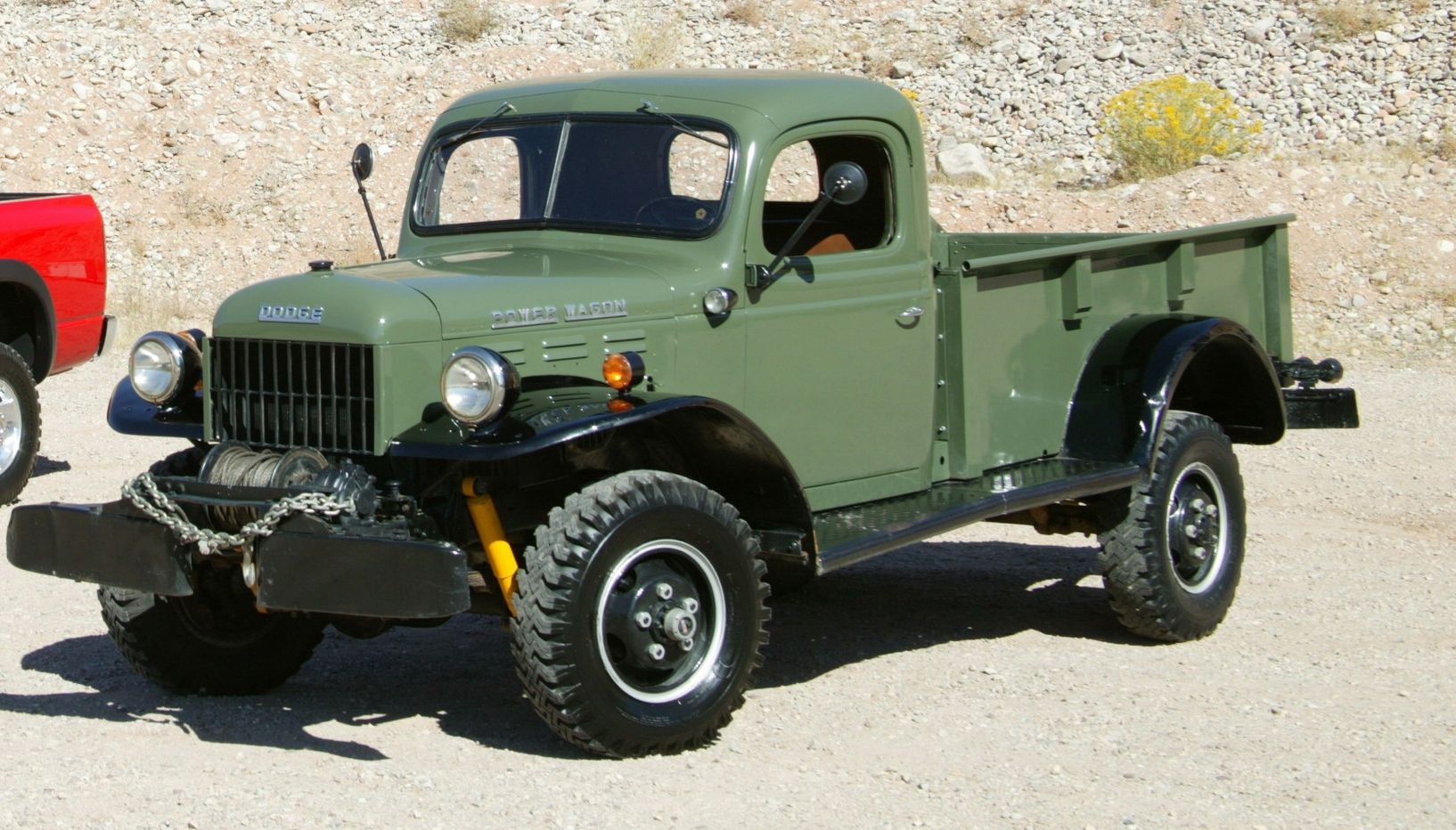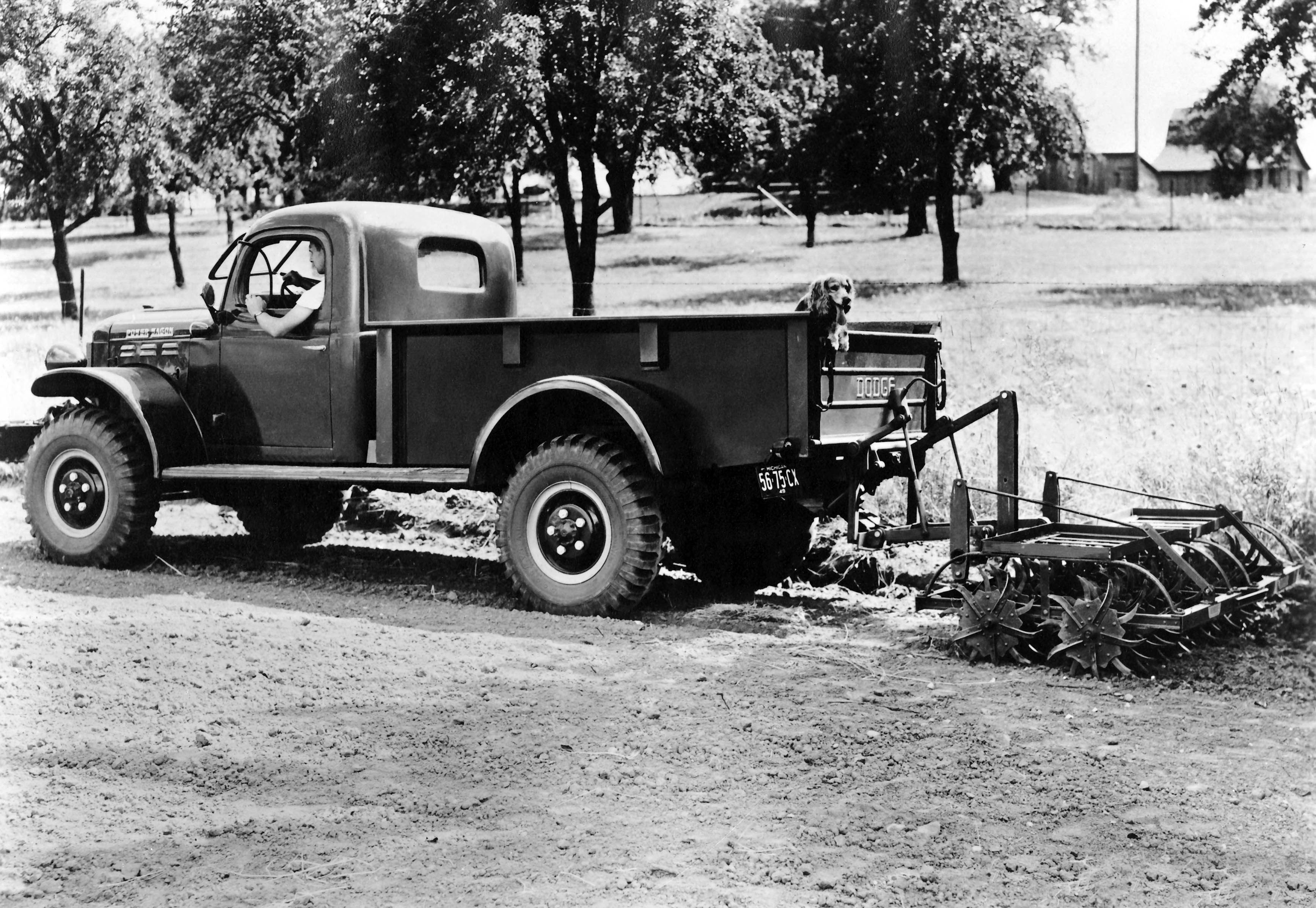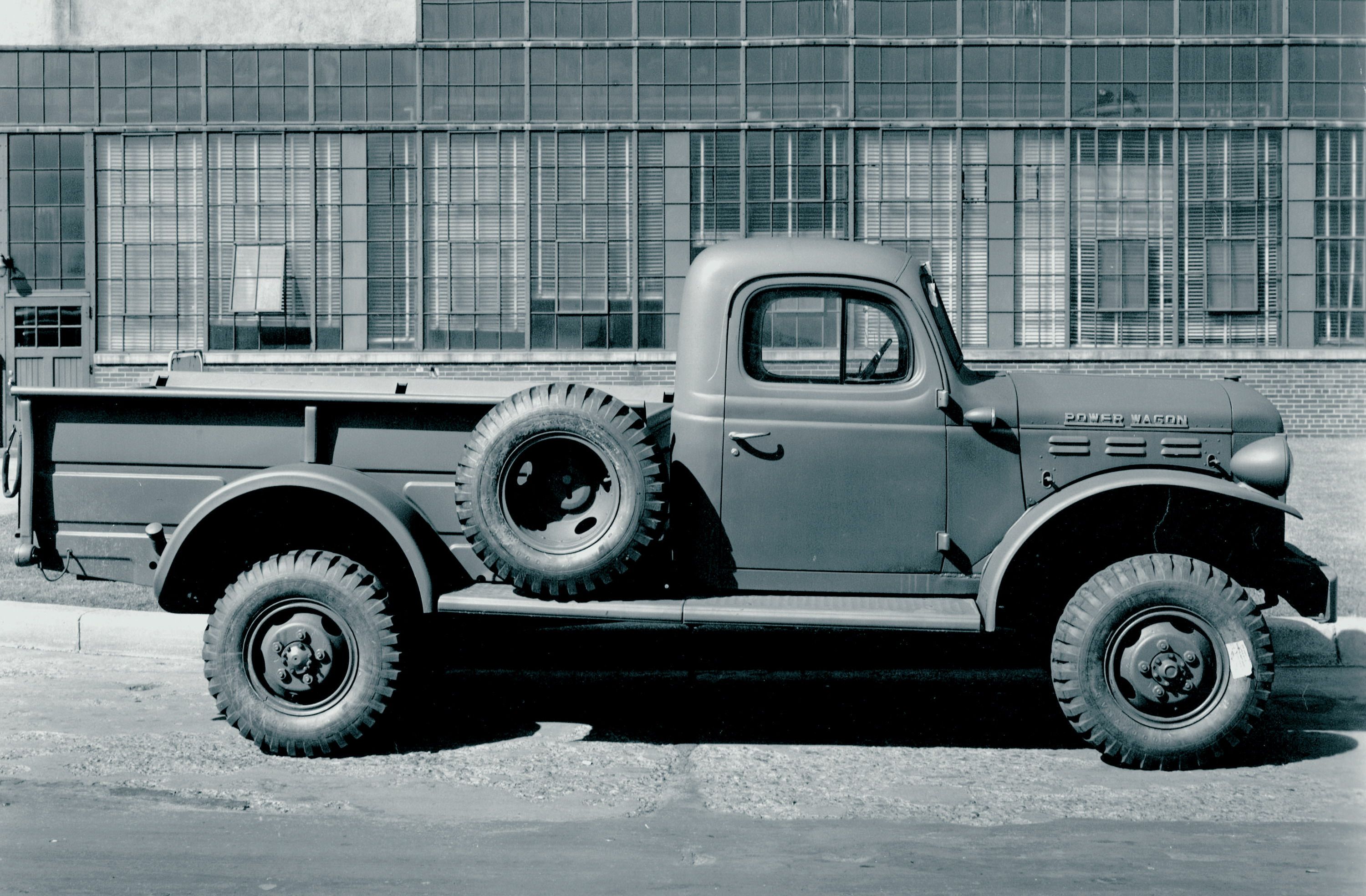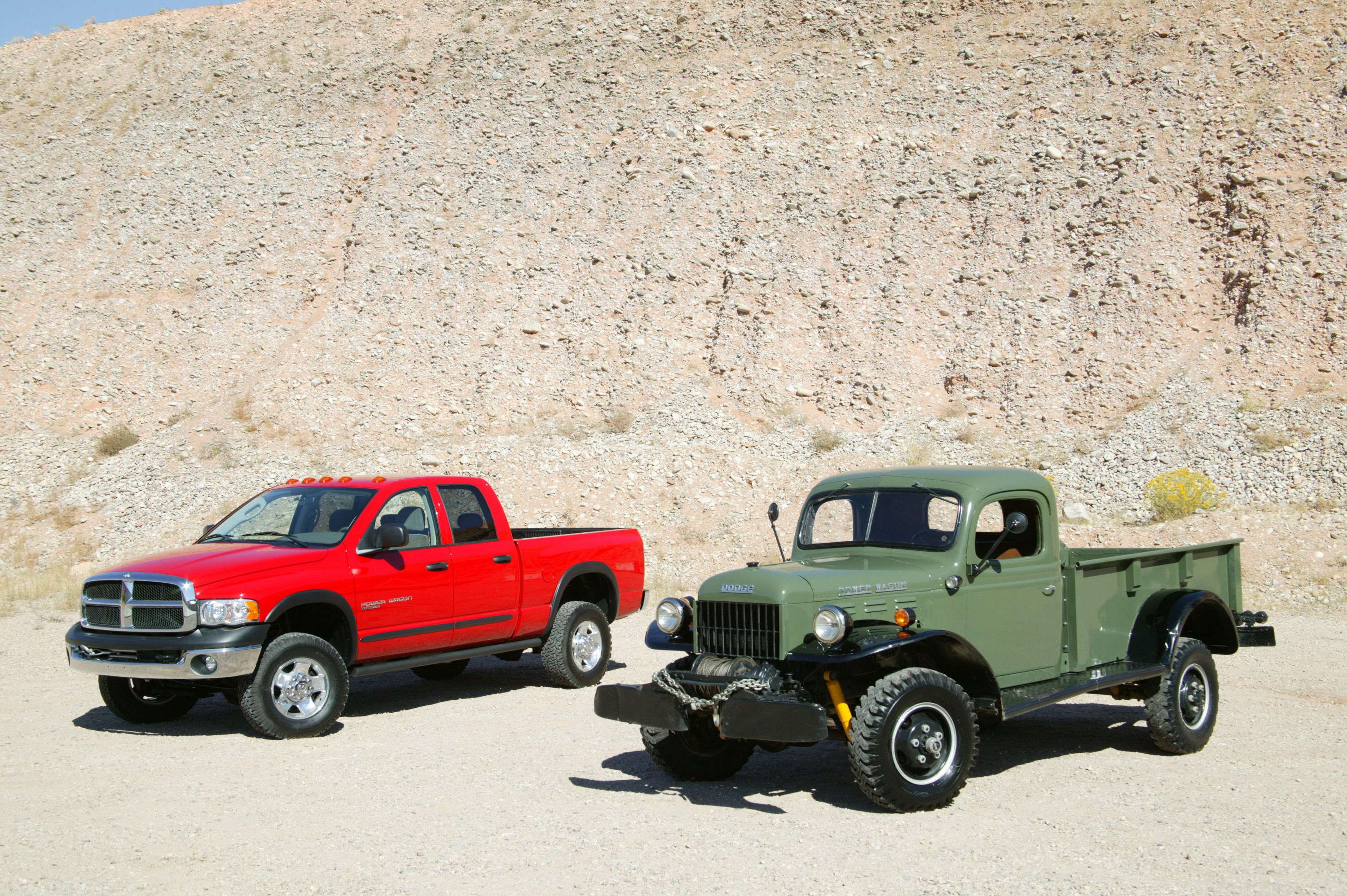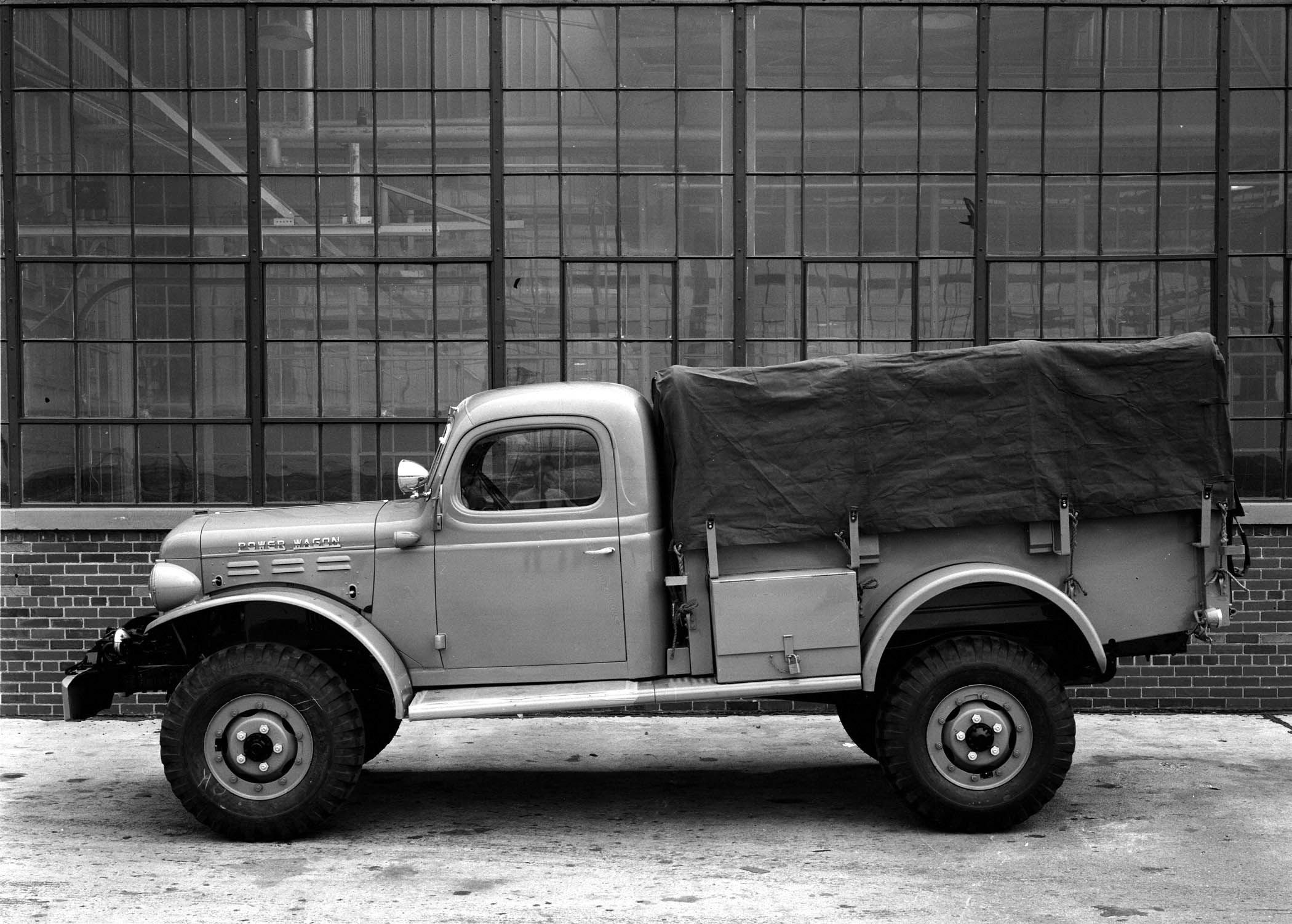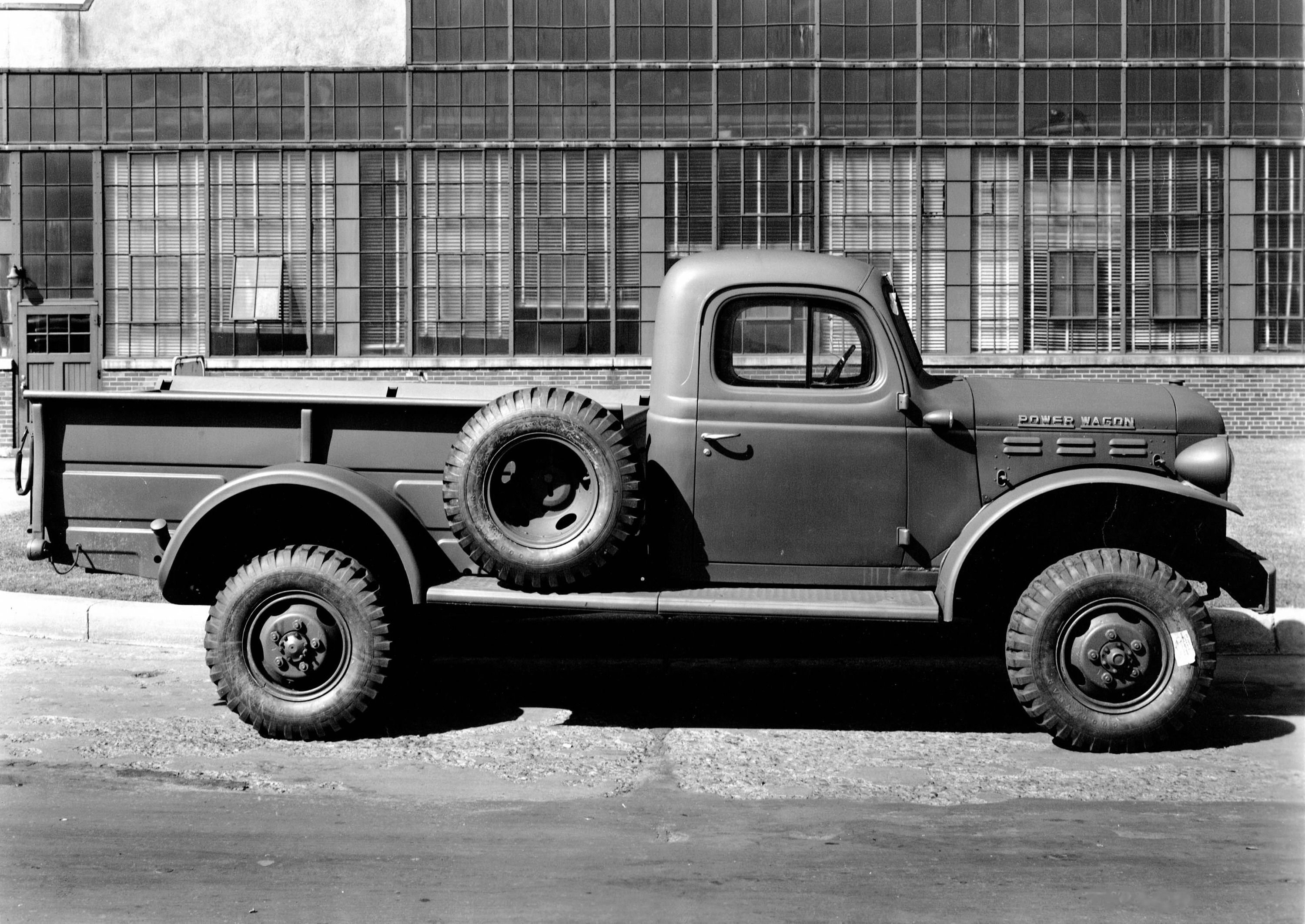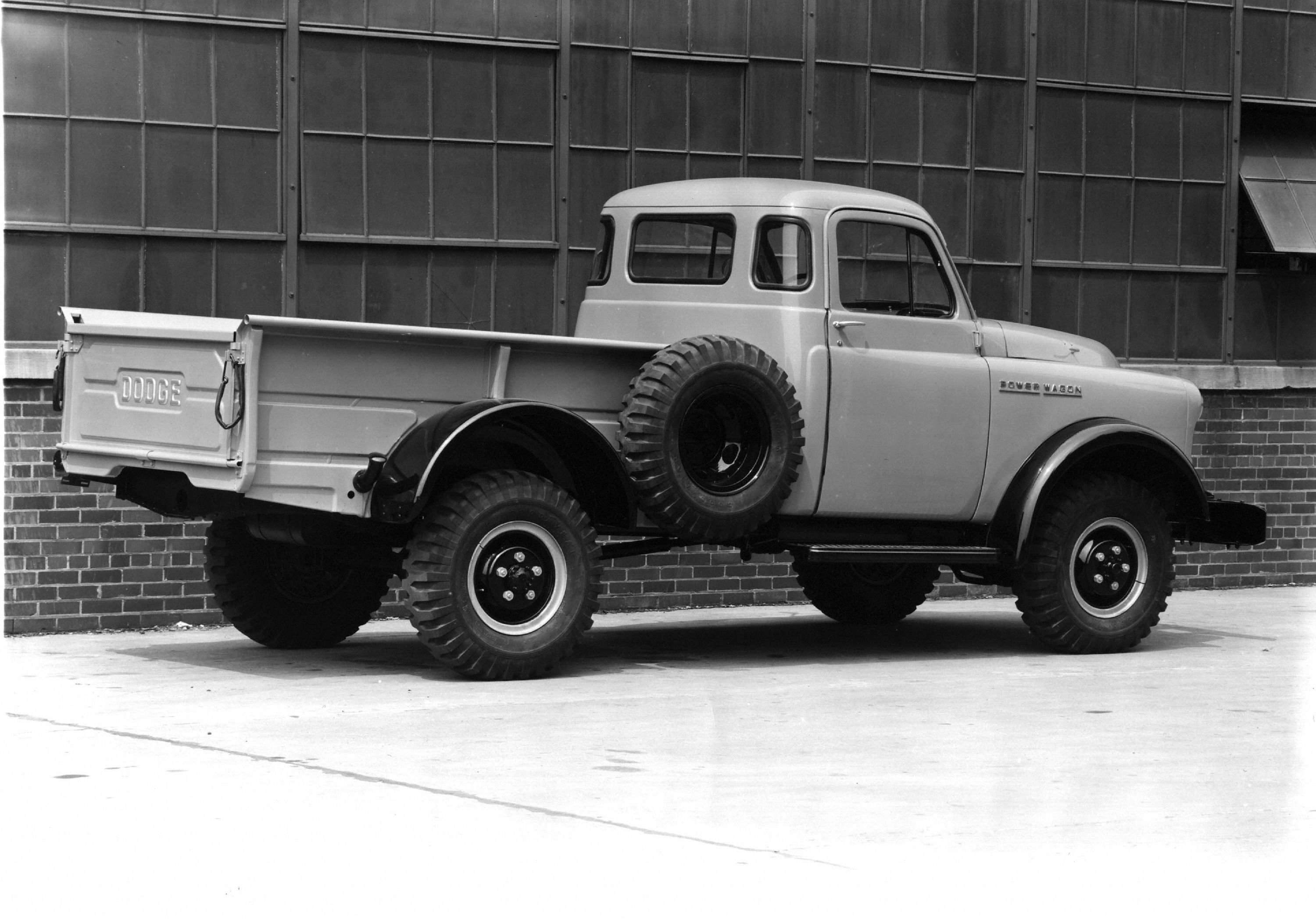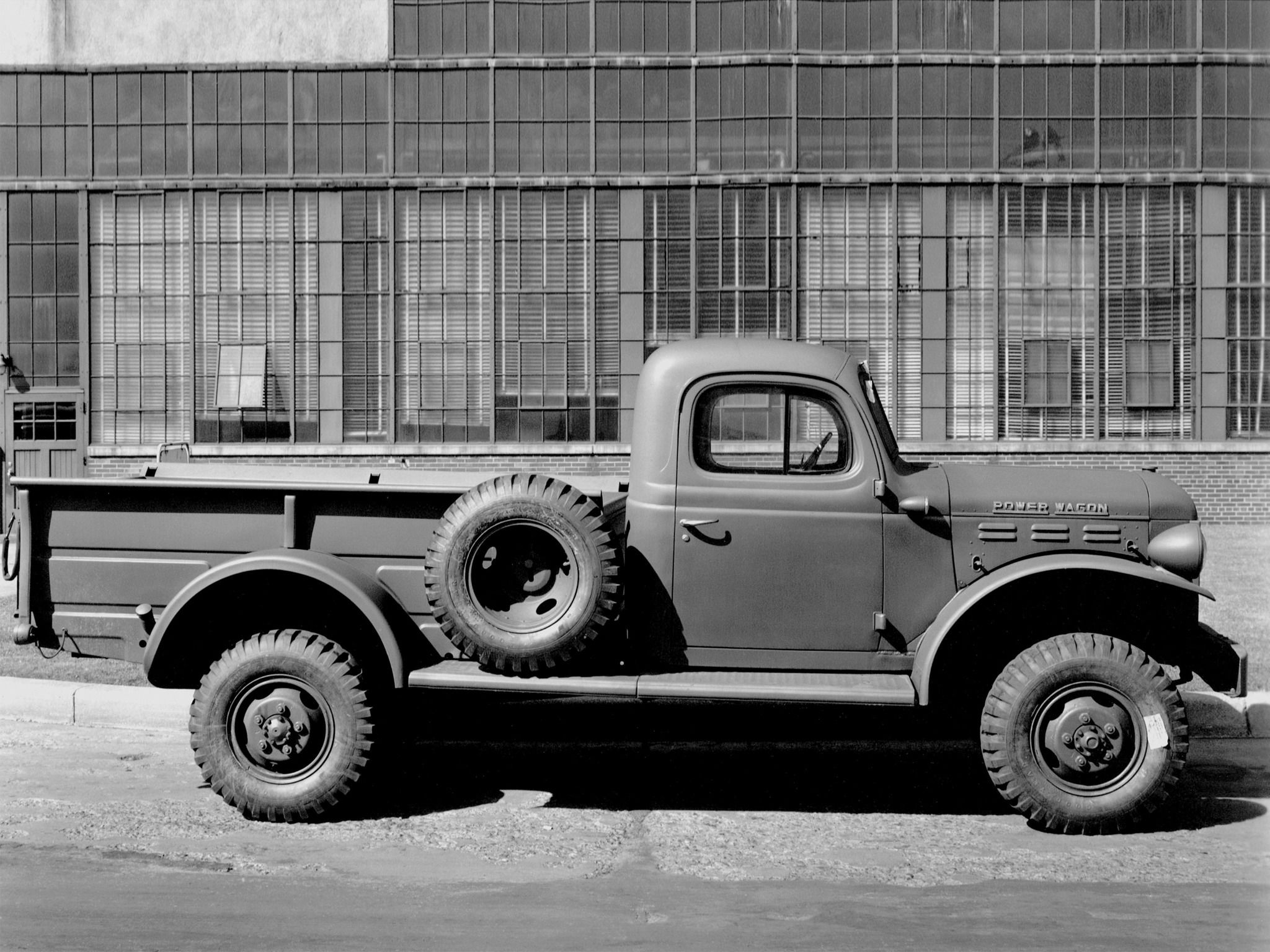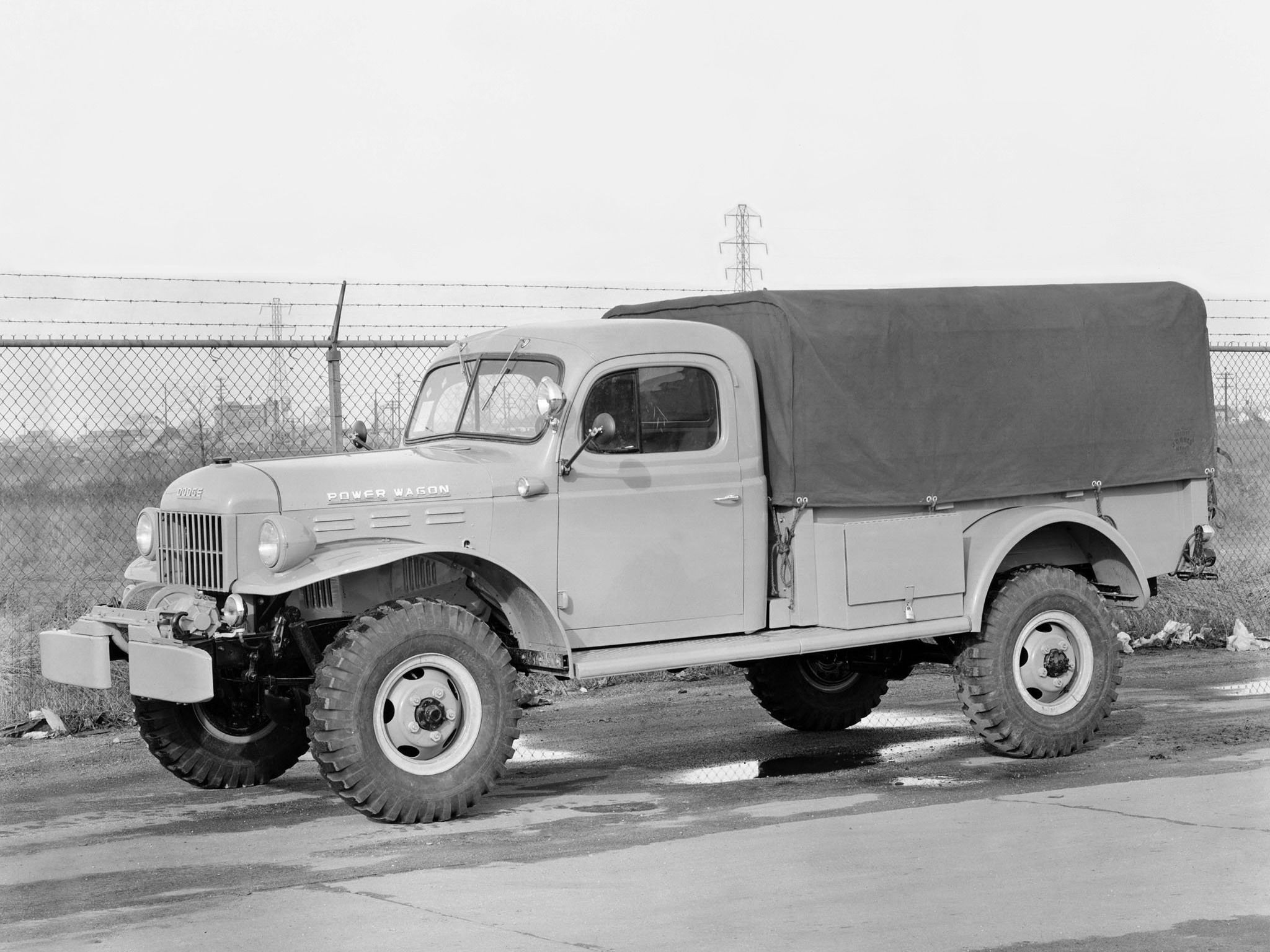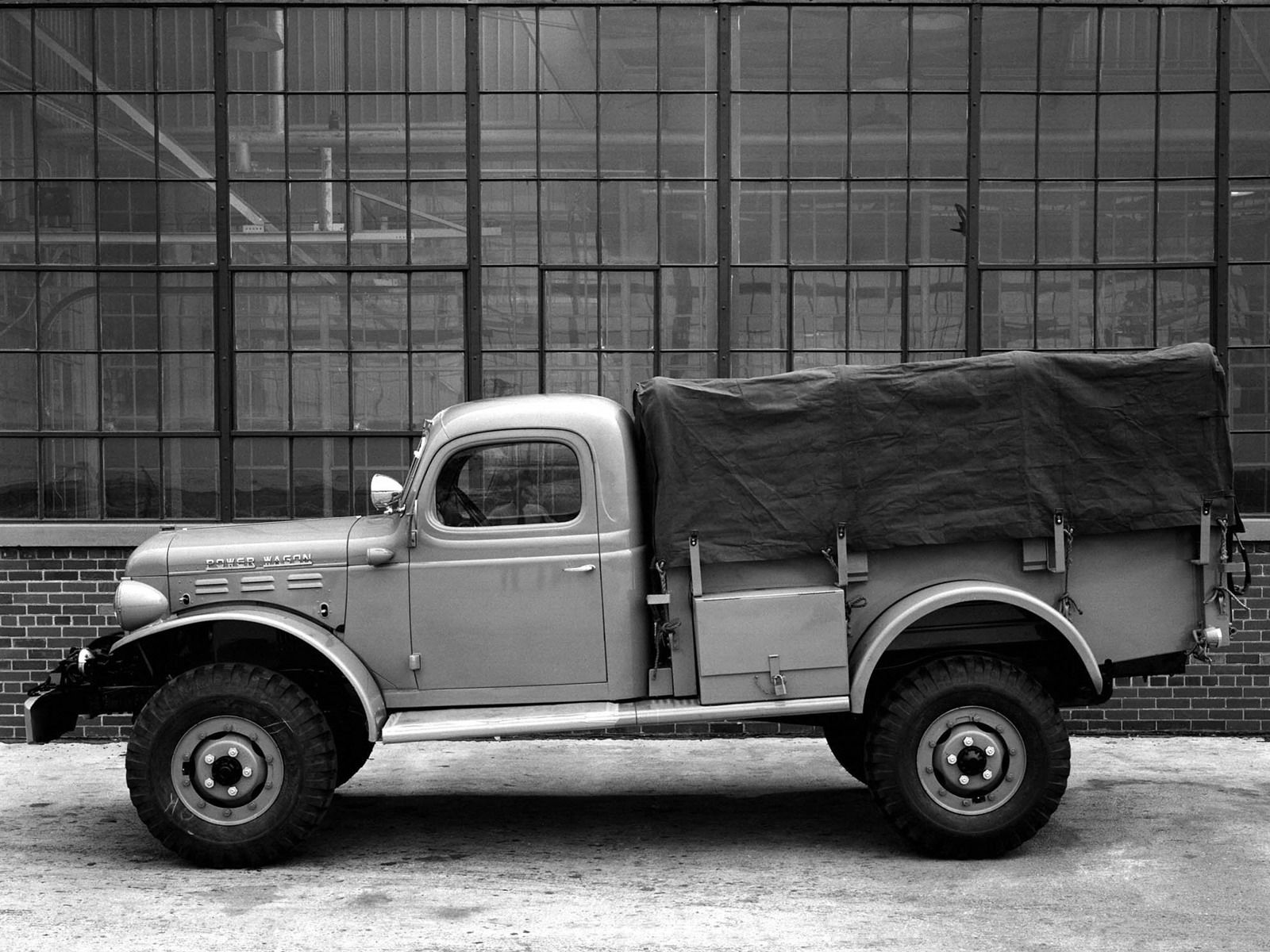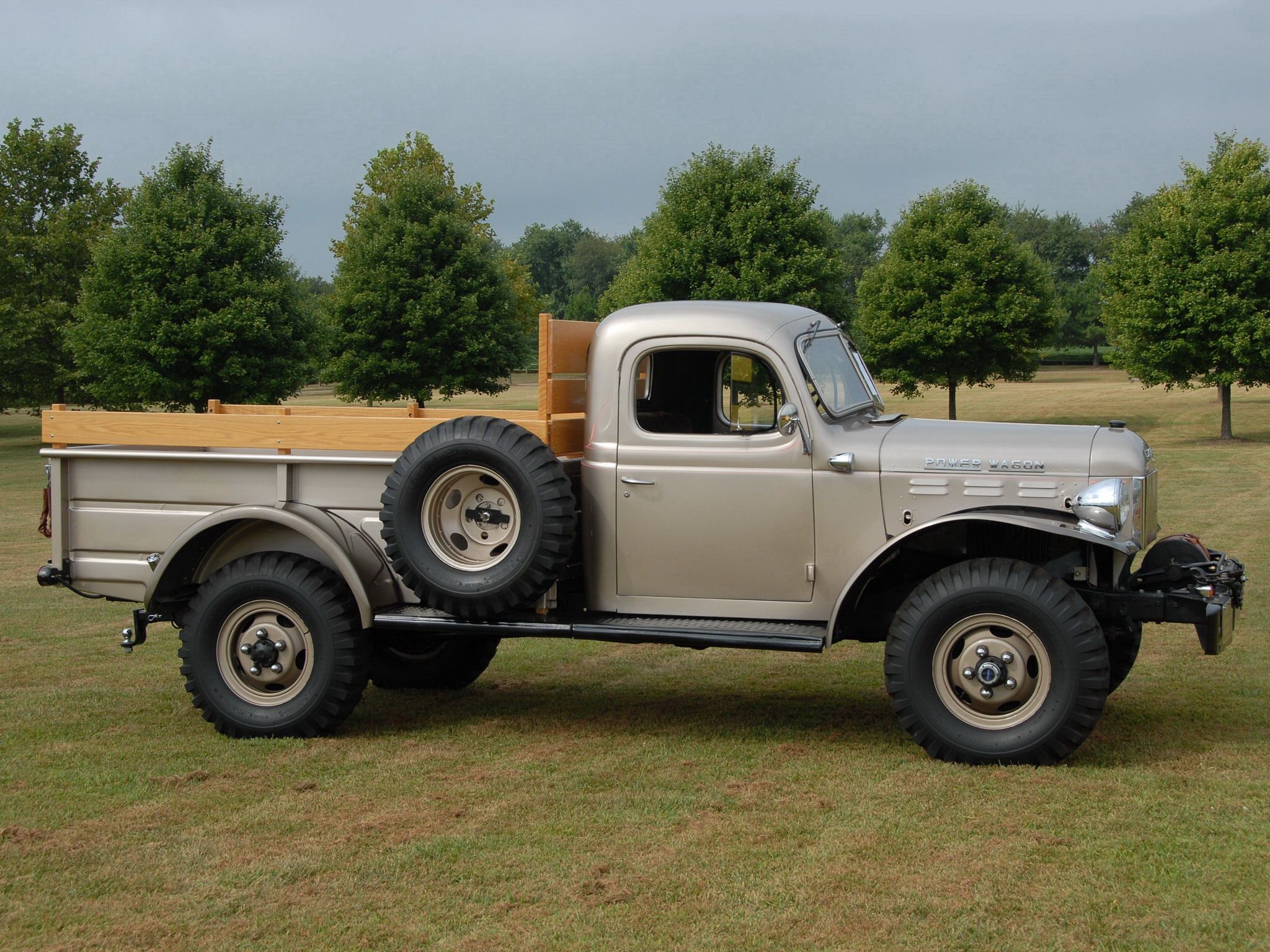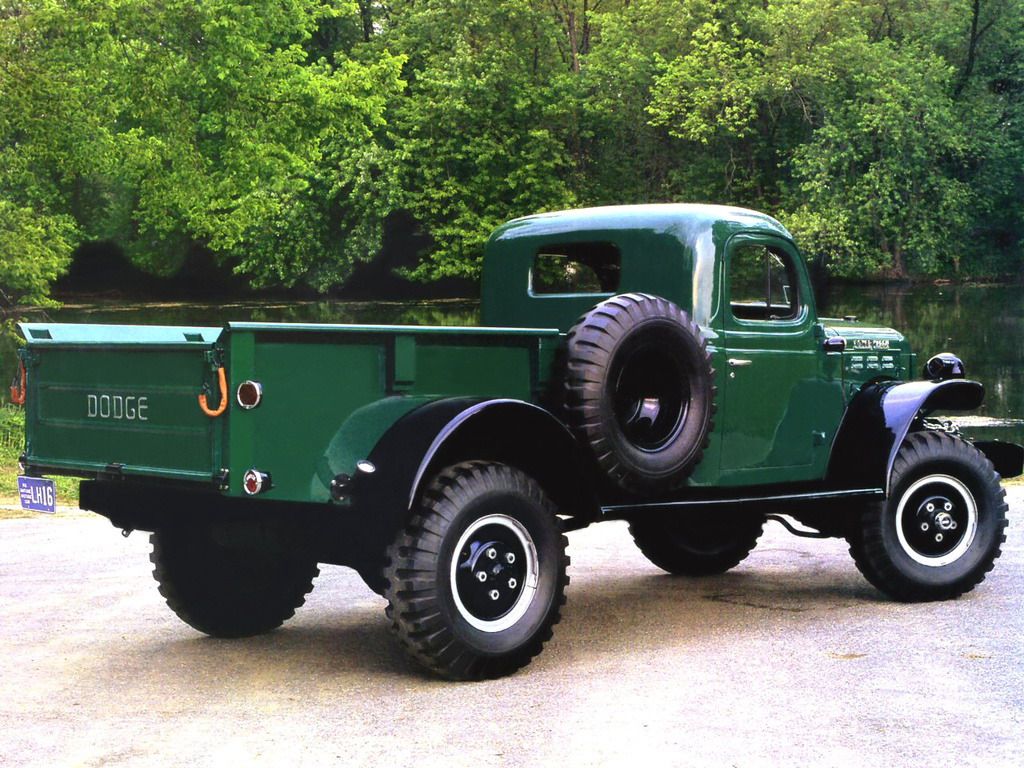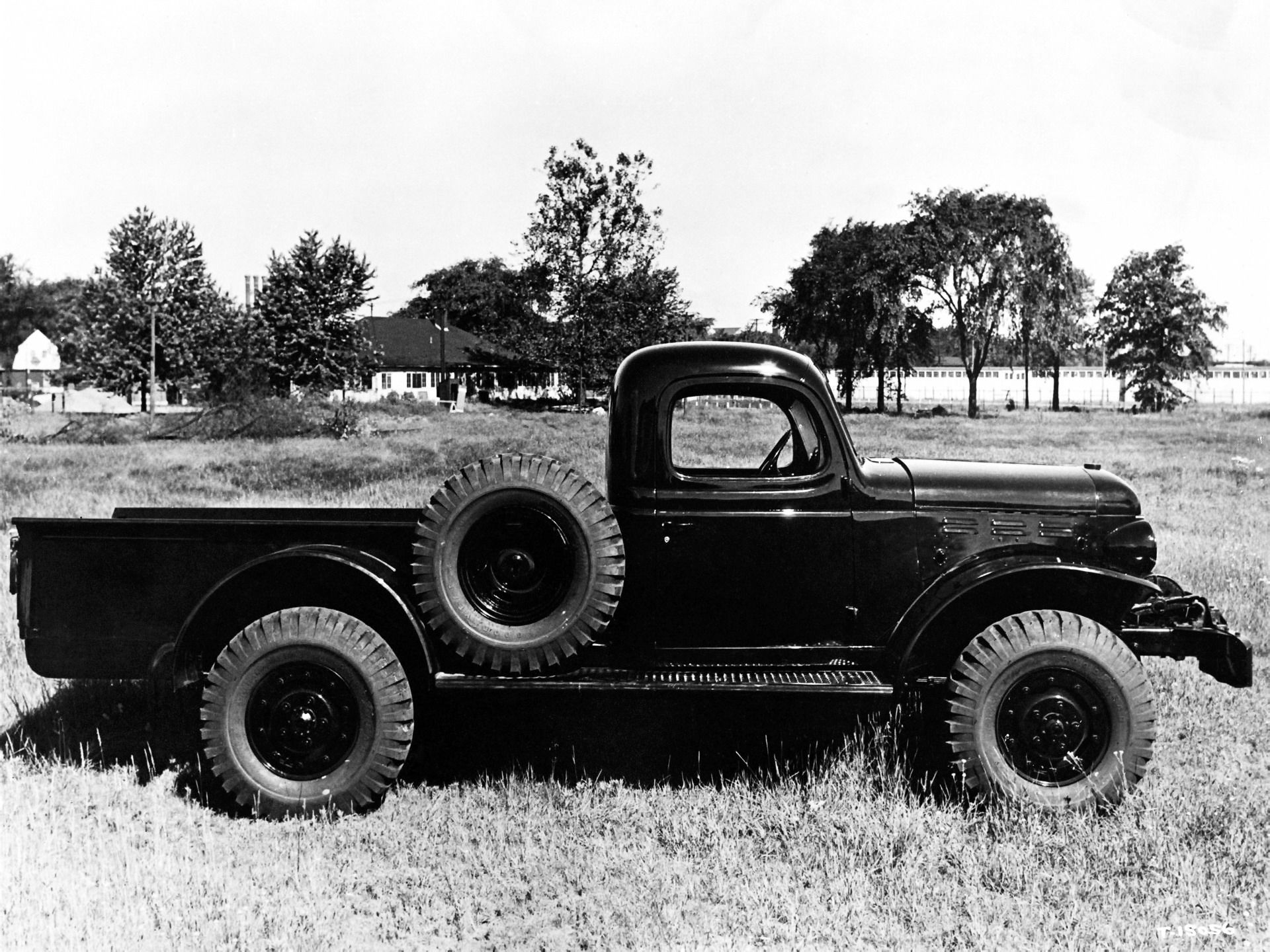The Power Wagon name is an icon, having been tied to some of the greatest and most utilitarian pickups of the last 70 years. Even today, the Power Wagon name lives on under the Ram brand->ke4969 and boasts some of the most hard-core off-road equipment found on any showroom floor.
It all got started after WWII when Dodge->ke28 started producing a civilian version of its military WC Series trucks. Debuting for the 1946 model year, the first Power Wagon brought 4WD to the masses. Sure there was the Willys Jeep->ke40, but the Power Wagon was more useful around the farm and for businesses that needed to transport product. The truck’s eight-foot bed and heavy-duty suspension gave the truck the ability to haul upwards of 3,000 pounds.
These early Power Wagons were powered by old-school flat-head inline six-cylinders. The early 230 cubic-inch examples and later 251 cubic-inch mills produced adequate power for hauling such loads, though they pale in comparison to modern engines, including the current 6.4-liter Hemi V-8 used in the 2014 Dodge Ram Power Wagon. Still, the Power Wagon made a name for itself in those early years.
Production of the original Power Wagon lasted through 1980, though a redesign in the mid 1960s brought a more modern, less military look and added more creature comforts. After 1980, the Power Wagon name laid dormant until Dodge revived it on its trail-ready Ram 2500 model for 2005. Nowadays, Dodge has given way to the Ram Trucks brand while the Power Wagon name thankfully lives on.
Still, of all the Power Wagon variations that came throughout the years, it’s those early flat-fender workhorses that earned the Power Wagon name a spot in automotive history.
Continue reading to learn more about the 1946 Dodge Power Wagon.
1946 Dodge Power Wagon
- Make: Array
- Model: 1946 Dodge Power Wagon
- Engine/Motor: flat-6
- Horsepower: 94 @ 3200
- Torque: 185 @ 1200
- Transmission: four-speed manual
- [do not use] Vehicle Model: Array
Exterior
The Power Wagon’s design is all business. There’s little “extras” attached to this truck, meaning everything had a purpose. The wide, flat fenders here perfect for mounting the large headlights and turn signals while providing a decent workspace when tinkering under the hood. The front grille was purely function, though its design mimicked cars and trucks of that period. The upright cab featured tall glass and room for three.
The eight-foot bed featured stake pockets for building rack systems while a spare tire was mounted side-saddle style. Dodge offered various bed configurations as well, including a chassis cab, military ambulance box, and a troop carrier with a canvas top. Yep, even though the Power Wagon was built for civilians, Uncle Sam still had plenty of interest in the beastly trucks.
Many models were equipped with a 5,000-pound winch and heavy-duty bumper. This made off-road recovery a breeze. The trucks were also fitted with deep-lug tires that were typically found on military trucks.
Interior
Like most trucks of the day, the Power Wagon’s interior was sparse. Vinyl seats, manual crank windows, a manual transmission paired with a manual, two-speed transfer case, and a basic array of gauges were all that occupied the cab. This simplistic approach kept costs down and repairs simple.
This bare-bones theme is far removed from modern trucks that come with heated leather seats and satellite radio. However, the second generation of Power Wagon – those built from 1964 through the end of the decade – was one of the first trucks to offer a crew cab configuration that allowed for six occupants. Obviously that trend has spread like wildfire through the truck community.
Drivetrain
The original Power Wagon came with a 230 cubic-inch, or 3.8-liter, flat-head inline six-cylinder. This design proved to be compact and reliable thanks to its internally mounted camshaft and valves. The engine was rated at 94 horsepower at 3,200 rpm and 185 pound-feet of torque at 1,200 rpm. A single barrel Stromberg carburetor fed fuel into the engine.
Later first-generation Power Wagons came with a larger 251 cubic-inch flathead six-cylinder. The 4.1-liter engine had many of the same features as the smaller engine, but had a slight increase in power.
Both engines came mated to a four-speed manual transmission and a two-speed transfer case. The transmission provided a power take-off unit (PTO) for operating things like the front winch, farm equipment, and fire hose pumps. Of course the transfer case offered two speed – both high and low range – for differing terrain.
Prices
The price of goods back in the 1940s was a lot less expensive than nowadays, even without factoring in inflation. A brand new 1946 Dodge Power Wagon cost a whopping $1,627 when it was new. In 2015 money, the Power Wagon would cost just under $20,000.
Conclusion
The Power Wagon has withstood the test of time, having examples still rolling off the production line in 2015 – some 70 years after its introduction. That first model of Dodge’s go-anywhere, do-anything pickup truck was an icon in its own rights and helped America recover from the Second World War. Its classic design and bulletproof powertrain is the stuff of legends.
Though they were built as civilian vehicles, many Power Wagons ended up serving in the Armed Forces just like its predecessor, the Dodge WC Series, did. The bigger, stronger, and more robust Power Wagon did tough jobs that the smaller Jeep couldn’t, including ambulance duty with a purpose-built enclosed shell.
The current Ram Power Wagon might not share a single part with the truck of the 1940s, but it does embody the same spirit and tough attitude found throughout the Power Wagon lineup.
-------------------------------------------------------------------
Ed's Note:
In my teens I owned a '46 Power Wagon. Found it on a street-corner used-car lot, and the dealer had no clue what to make of it or how to value it. I grabbed it for stupid money. And while Mark knows his trucks, I have to say he obviously has never had his hands on one of these, because the current model could in no way hold a candle to it, except for highway travel. The '46 was screaming at 50 mph. In fact, for road travel it was absolutely miserable.
But everything about that truck was completely overbuilt by today's standards. Every nut, bolt, body panel, spring, shackle, etc., etc., was huge and made of heavy steel, which is probably why, 30 years later, it was still 100 percent solid and viable. This thing was more a farm implement than a road-going vehicle. Mine had the PTO winch, and a set of jail bars in front of the radiator to guard against snapped cables.
A couple of anecdotes:
The windshield cranked out from the bottom -- hinged at the top. It had one wiper, vacuum operated, that only worked when you were off the gas. So in the rain, you were better off cranking out the windshield and peering out under it than fooling with the wiper.
It rode like a buckboard, so if you were dumb enough to try drinking a bottle of soda, you were almost guaranteed to chip a tooth. There were no seat belts, so more than one of my friends wound up bashing his head on the roof of the cab, as did I.
But the tradeoff for these inconveniences was astounding capabilities. Let's start with torque -- low-end torque. That flat-head six and ridiculously low gearing redefined the concept for me. I could ease that thing (his name was Herkamer, by the way), up to a large tree, pop the clutch in first gear (high range, mind you), and it wouldn't stall. Nope. Just went "chug... chug... chug" and proceeded to slowly dig four holes in the dirt with those huge, army-lug tires. Incredible. I never got tired of performing that little demo for my friends.
I remember loading about 25 100-pound bags of feed in it for a friend, and the suspension didn't sag more than an inch, if that. Couldn't even tell they were there.
One day my dad was mowing the grass around our little pond, which had about a 1-foot drop-off at the edge. Well, he got too close and dropped the tractor sideways into the drink. Not deep, it was only about half submerged in the mud. This was the largest Cub Cadet they made. Not a full-size farm tractor, but far from a lawn tractor. I just hooked a chain to the middle of the tractor frame (I hadn't replaced the missing cable on the winch yet), and again, popped the clutch in first, high range. "Chug...chug...chug," and up that tractor came, sideways, slowly but surely. Didn't even tear up the grass.
Well, I definitely had the coolest rig in my high-school parking lot, but the novelty eventually wore off for me because the truck was so useless for road duty. Then one day, some friends of my mom's approached me about the truck. They were a couple in their 30s, and had bought a tract of land in the mountains of western North Carolina. They were going to homestead the old fashioned way, long before "off the grid" was even a term. They were on a shoe-string budget and needed a rig.
Well obviously, this would be a better home for ol' Herkamer, doing what he was meant to do, so I sold him to them for what I had paid (a pittance).
For a year or so, they sent me pics when they infrequently got into the town of Franklin. They used him to create a road and clear the lot for their home. I had pics of Herk pulling logs, using the winch to raise the logs for the walls of their cabin, and pulling water from a nearby stream, using a pump they'd rigged up to the PTO. They absolutely loved that truck. He became a member of their family up there in the woods. I'm not joking when I say that those pics brought tears to my eyes. It was like watching the kid you adopted because nobody wanted him go on to become a doctor. He was in his element, doing what he was created for.
I don't know what became of Herkamer -- lost touch. I like to think they still have him, but regardless, I'm certain he's still "chug...chug...chugging" away somewhere, because you can't kill a truck like that.

